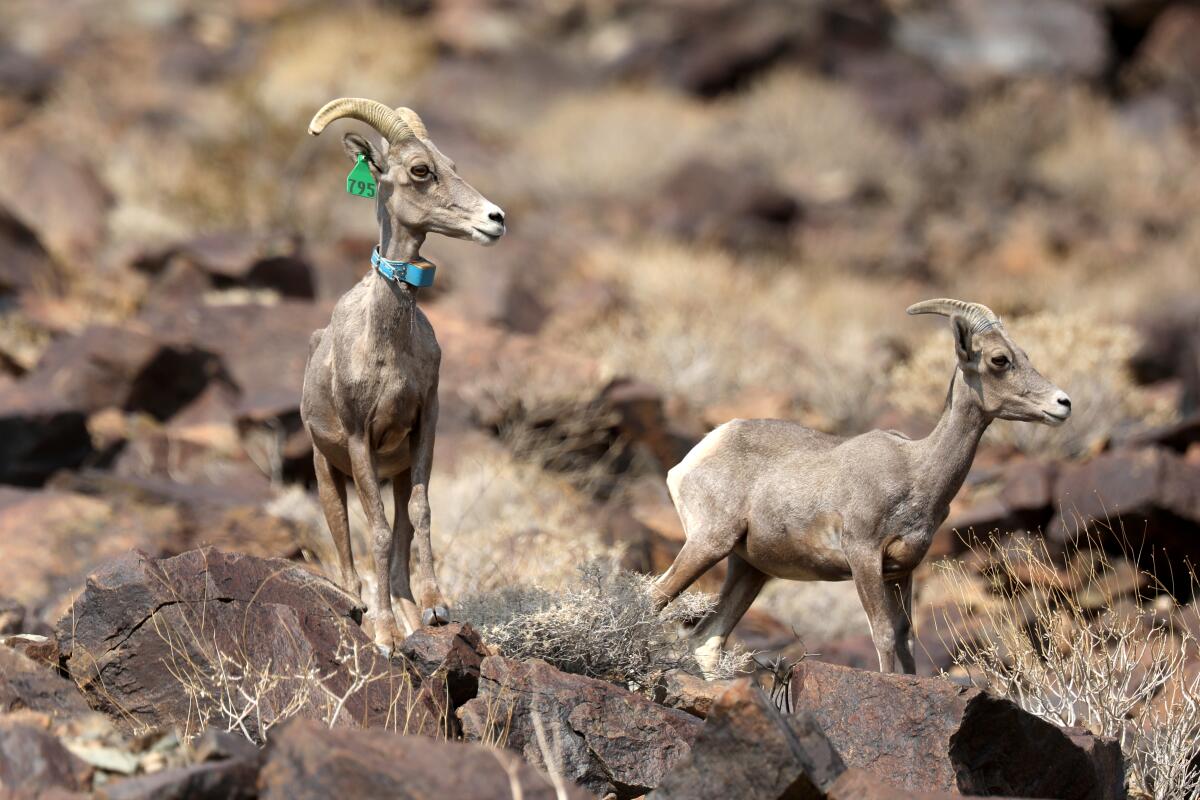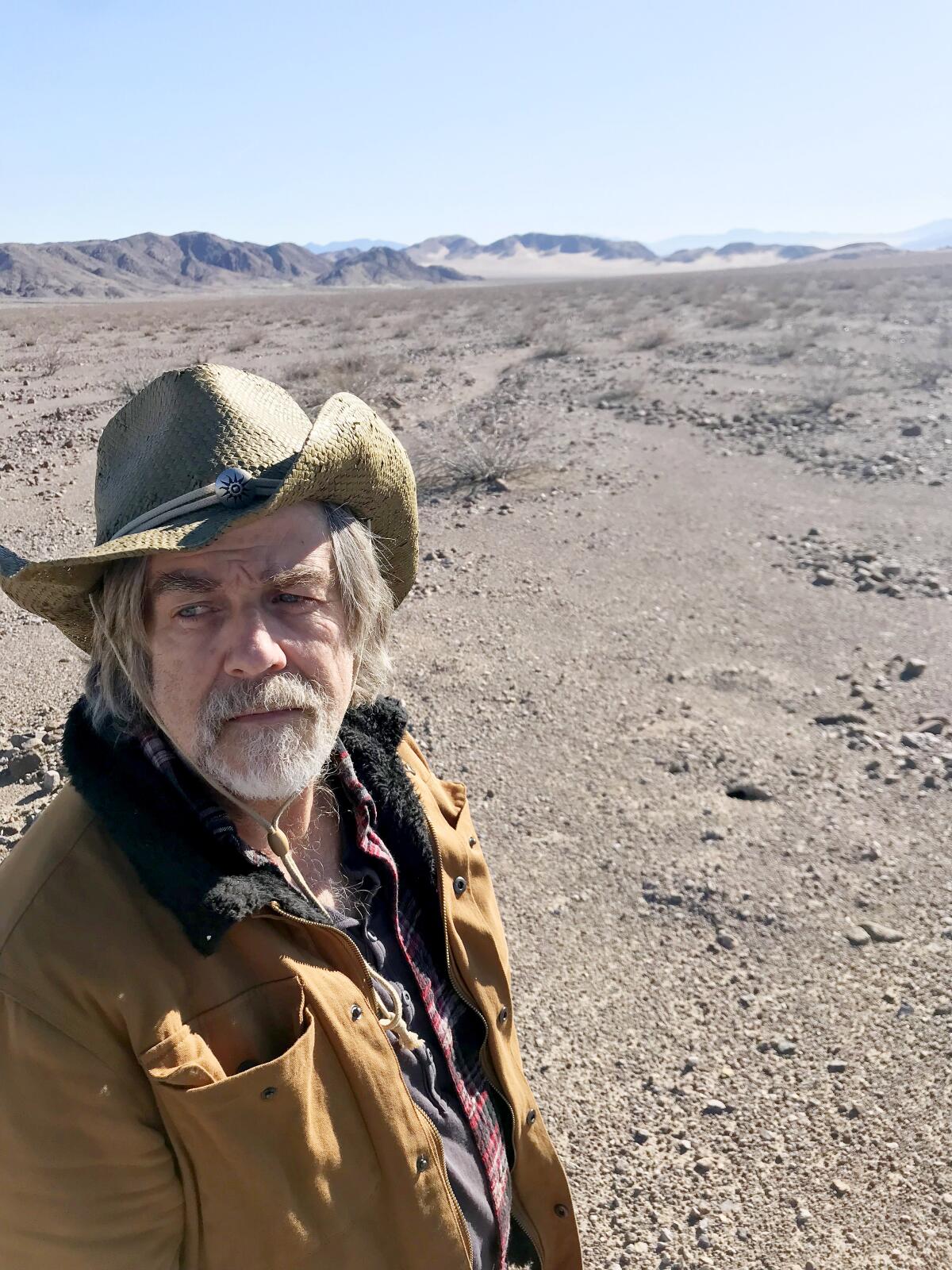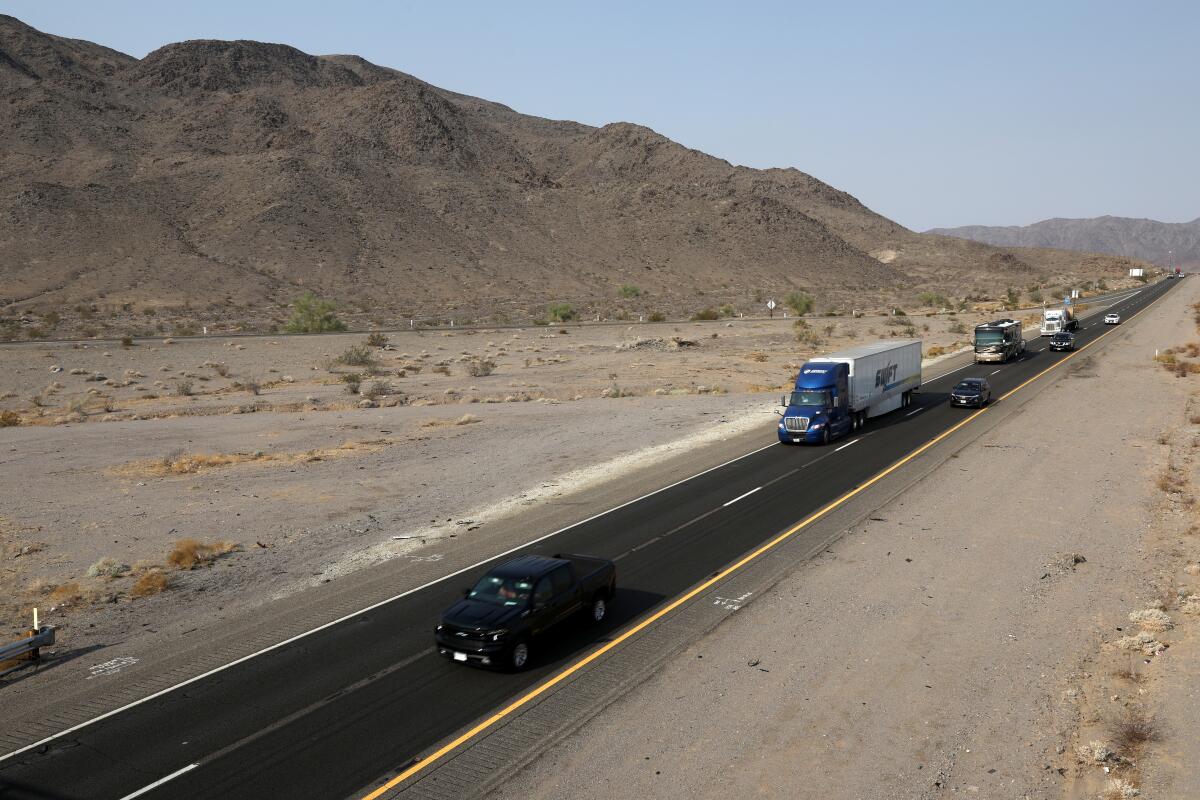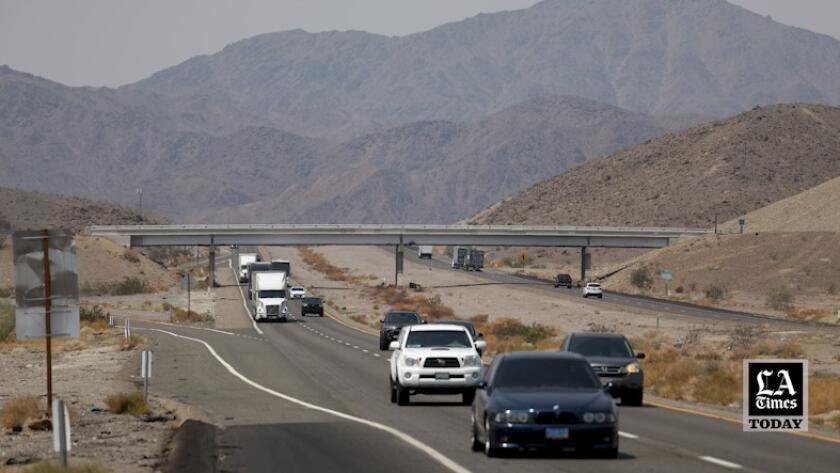Can bighorns, a bullet train and a huge solar farm coexist in the Mojave Desert?

BAKER, Calif. — To most travelers on Interstate 15 between Barstow and Las Vegas, the Mojave Desert’s jagged Soda Mountains rise above a seemingly lifeless wasteland of hellish sand dunes, lava flows and vast flatlands.
But scientists say the scorched terrain just half a mile north of the Mojave National Preserve’s aptly named Devil’s Playground is a deceptively delicate and vital ecosystem rich in wildlife: tortoises, foxes, badgers, bobcats and bighorn sheep.
Now, proposals to build a high-speed electric rail linking Southern California to Las Vegas and revive a long-dead solar project in the area have triggered a clash with conservationists over how best to ensure that bighorn sheep populations do not become genetically isolated — or wind up as roadkill.
Of particular concern was a recent announcement that the California Department of Fish and Wildlife is reviewing a revised version of the controversial Soda Mountain Solar Project that includes requests for permits to “take,” or fatally injure, desert tortoises, and alter desert washes during construction.
“We can’t let this solar project happen,” said Chris Clarke of the nonprofit National Parks Conservation Assn.
“The value of this landscape and its habitat,” he said, “far outweighs the value of energy the proposed project would generate.”

For Mojave watchers, the situation is a crucial test of state Fish and Wildlife’s ability to mediate compromises among the developers while also planning a sustainable future for complex and fragile ecological networks across the desert.
Critics worry that the solar project could jeopardize negotiations among federal rail officials, Caltrans, state wildlife authorities and the rail developer, Brightline West of Miami, to include three wildlife overcrossings in its $8-billion project, which would occupy the center divider of Interstate 15.
Zglobal, the Folsom, Calif. renewable energy company backing the Soda Mountain Solar Project, and Brightline were unavailable for comment.
But Christina Aiello, a biologist at Oregon State University and expert on bighorn sheep along Interstate 15, said, “It’s a bit of a shock that this zombie solar project has reemerged from the dead.”
In the worst-case scenario, it could lead bighorn sheep populations to avoid the region, which would render wildlife overcrossings a huge waste of money, she said.
“It would also amount to a slap in the faces of all those who’ve poured labor, money and years of their lives into local bighorn recovery efforts,” Aiello said.
State wildlife authorities will evaluate the project’s environmental impacts, as required by the California Environmental Quality Act.
“Let’s all take a deep breath,” said Chuck Bonham, director of state Fish and Wildlife. “The desert is an invaluable landscape, and any proposed solar project has got to go through a public process.
“If we need to make changes to avoid conflicts, we’ll do that. But there will be a way in which everyone can accept and embrace connectivity for the bighorn populations — it just makes sense.”

Desert bighorns once thrived in serrated mountain ranges across the Mojave Desert, where they formed a “metapopulation” of groups connected by ancient trails. Today, their survival is threatened by disease, drought, interstate highways and renewable energy.
The development of solar-power facilities in the desert has ranked among the most pressing federal priorities since the former Obama administration announced plans to ease the nation’s dependence on fossil fuels and curb global warming.
Prospective solar energy developers have long regarded the site, roughly seven miles south of the community of Baker, as a high-quality resource.
That’s because of its proximity to existing infrastructure, including Interstate 15, two transmission lines, a distribution line, wireless cellular communications towers, a fiber-optic line, a fuel pipeline and a telephone line.
The city of Los Angeles in 2015, however, dropped plans to buy electricity from the 3-square-mile project after a review found that other proposed renewable energy projects would charge the city less for electricity and would have fewer challenges in delivering the power to L.A.
A year later, the project was rejected by the San Bernardino County Board of Supervisors because of the potential effects of its wells on underground aquifers, delivering a serious blow to one of the most controversial renewable energy projects in the state.
The revised proposal, however, aims to resolve that obstacle by eliminating groundwater wells from its plans.
And there’s something else about the project that has apparently changed: Los Angeles officials say they would be interested in receiving proposals for buying power from the 300-megawatt project “as part of the competitive procurement process.”
The project would operate year-round and deliver solar-generated power to the regional electrical grid through an interconnection with the existing 500-kilovolt transmission line co-operated by the Los Angeles Department of Water and Power, officials said.
But sandwiched between Interstate 15 and the Devil’s Playground, Clarke suggests, are desert scenes that are unlikely to appear in a renewable energy company’s pitch to potential investors.
Striding along an arroyo lined with creosote brush, smoke trees and countless out-of-sight animal burrows and washes, Clarke said, “We favor renewable energy but not here.”
“This land is a crossroads of paths and volcanic outcroppings that help sustain the gene flows of native wildlife,” he said. “To the south is the Mojave National Preserve, which covers 2,400 square miles.”
Pivoting full circle on his heels, he then gestured toward the north and said, “Over there, beyond Interstate 15, are protected habitats extending 100 miles to the boundaries of Death Valley National Park.
“The idea of sacrificing this beating heart of the Mojave for more solar panels makes no sense.”
Watch L.A. Times Today at 7 p.m. on Spectrum News 1 on Channel 1 or live stream on the Spectrum News App. Palos Verdes Peninsula and Orange County viewers can watch on Cox Systems on channel 99.








